|
|
|
|
|
|
|
 Design Design |
 Boxes Boxes |
 Combinator Combinator |
 Formatting Formatting |
 Geometry Geometry |
 Reuse Reuse |
 Selections Selections |
 Paths Paths |
 Concurrency Concurrency |
 Exception Exception |
 Interaction Interaction |
 Utility Utility |
 Resource Resource |
 Drawing Drawing |
 Incremental Incremental |
 Customize Customize |
 Various Various |
Resources Management
The API cross references![]() give an immediate access to relevant interfaces and classes.
give an immediate access to relevant interfaces and classes.
 Resource Factory
Resource Factory
A resource factory declares an interface for creating
each resource (font![]() ,
color
,
color![]() ,
style
,
style![]() ,
graphical context).
A concrete resource factory such for AWT
implements the resources in a specific context.
,
graphical context).
A concrete resource factory such for AWT
implements the resources in a specific context.
Here is the
reason![]() to deal with resources through abstract factory.
to deal with resources through abstract factory.
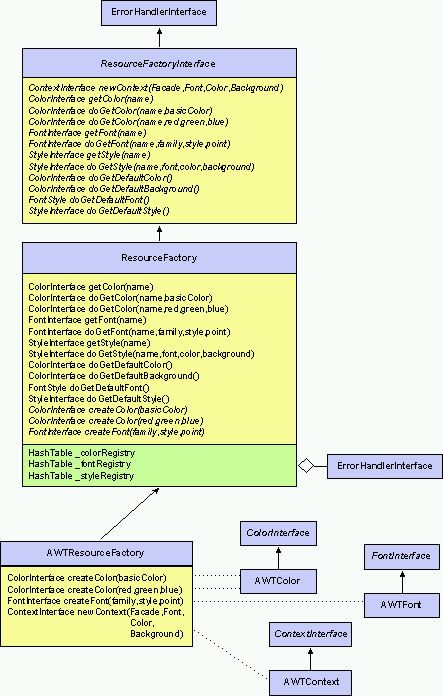
 Font
Font
Here is the
reason![]() for reifiying family and style.
for reifiying family and style.
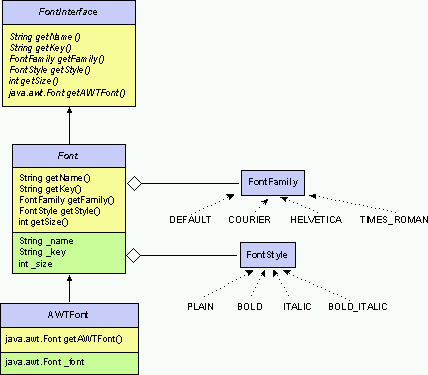
 Color
Color
Here is the
reason![]() for reifiying basic colors.
for reifiying basic colors.
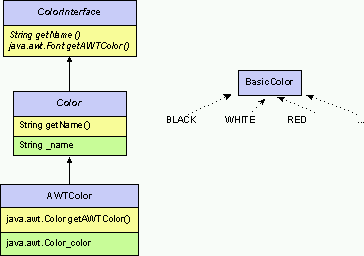
 Style
Style
A style is the conjunction of
font![]() ,
foreground and background
colors
,
foreground and background
colors![]() .
.
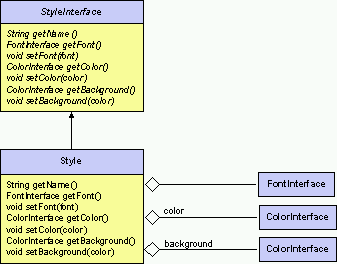
 Defered Resources
Defered Resources
A defered resource allows reference to resources before
we want or know how to allocate concrete one like
fonts![]() ,
colors
,
colors![]() or
styles
or
styles![]() .
As soon as the defered resource is loaded, there is no
subsequent cost in speed or memory.A resource owner
provides indirect access to the resource factory and
write accessor to assign the concrete resource.
.
As soon as the defered resource is loaded, there is no
subsequent cost in speed or memory.A resource owner
provides indirect access to the resource factory and
write accessor to assign the concrete resource.
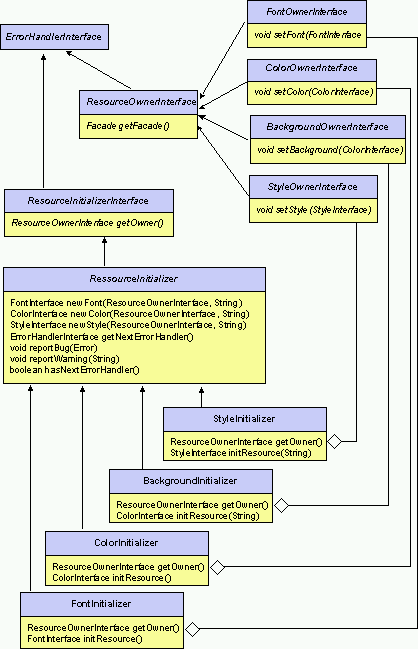
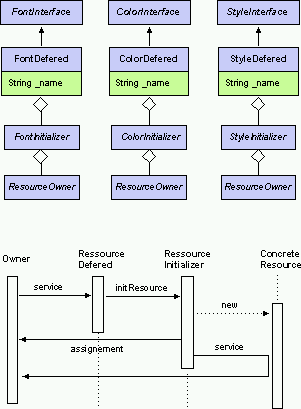
 International Resources
International Resources
We use the standard java.util.ResourceBundle![]() to manage locale-specific objects, like messages.
to manage locale-specific objects, like messages.
 API Cross References
API Cross References
- Interfaces:
- Classes:
- Exceptions:
 Design Design |
 Boxes Boxes |
 Combinator Combinator |
 Formatting Formatting |
 Geometry Geometry |
 Reuse Reuse |
 Selections Selections |
 Paths Paths |
 Concurrency Concurrency |
 Exception Exception |
 Interaction Interaction |
 Utility Utility |
 Resource Resource |
 Drawing Drawing |
 Incremental Incremental |
 Customize Customize |
 Various Various |
|
Comments or suggestions? Need some help? Copyright ©1998 INRIA Last updated 5 October 1998 by Bruno Conductier |
|